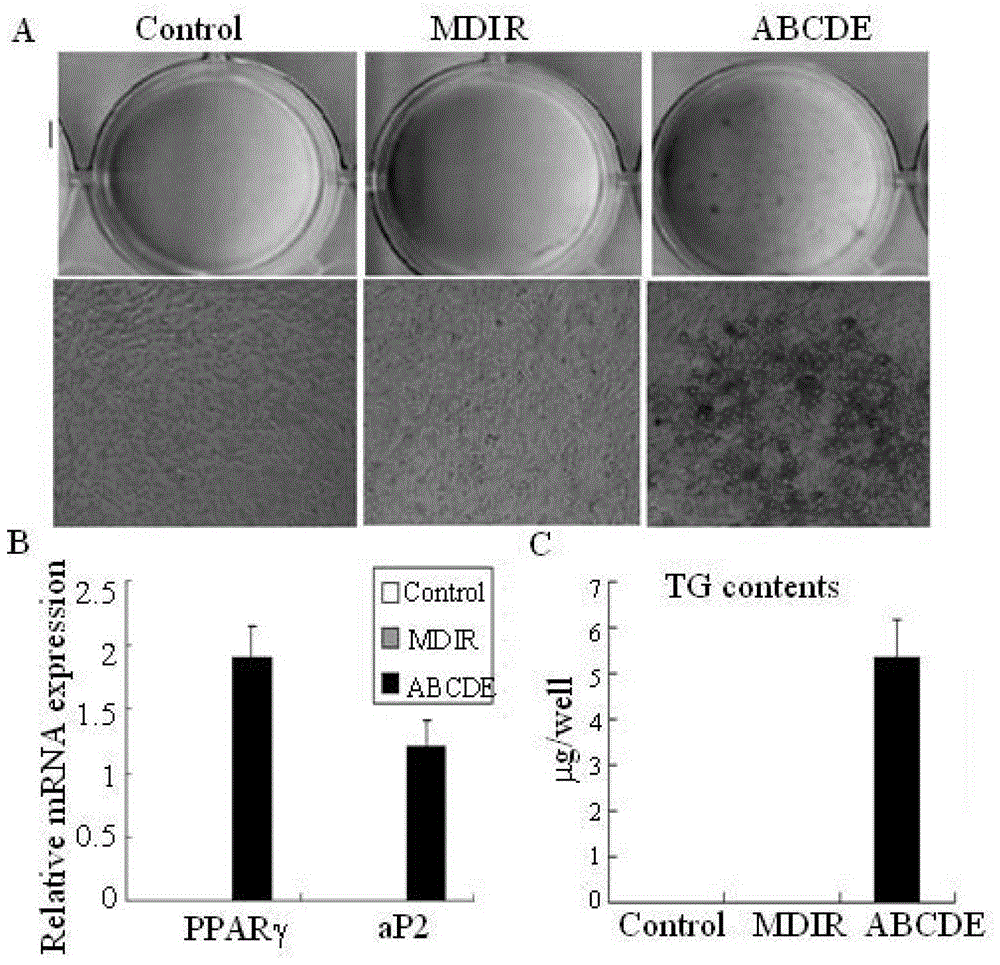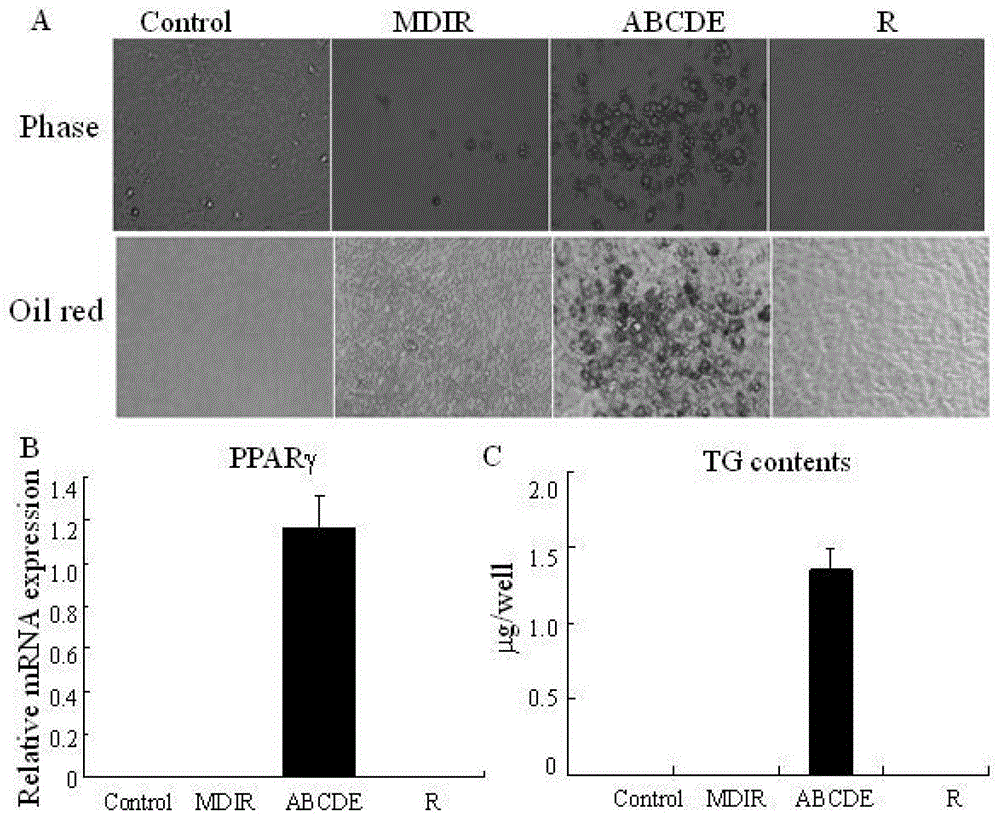Promoting fibroblast transdifferentiation into adipocytes using defined cytokine combinations
A fibroblast and hepatocyte growth factor technology, applied in the direction of animal cells, vertebrate cells, cell culture active agents, etc., can solve the problem of inability to separate adipocytes, and achieve the effect of simple induction process
- Summary
- Abstract
- Description
- Claims
- Application Information
AI Technical Summary
Problems solved by technology
Method used
Image
Examples
Embodiment 1
[0076] The transdifferentiation of embodiment 1NIH-3T3 cell
[0077] ABCDE group:
[0078] The revived NIH-3T3 cells were subcultured twice with cell growth medium, and then induced to differentiate. Taking one well of a 24-well plate as an example, after the cells grew and converged, the medium was replaced with cell induction medium (0.5ml) , in the induction medium, the final concentration of cytokines is as follows:
[0079] A: epidermal growth factor, final concentration 20ng / ml;
[0080] B: hepatocyte growth factor, final concentration 20ng / ml;
[0081] C: dexamethasone, final concentration 100nM;
[0082] D: Insulin, 5 μg / ml;
[0083] E: Rosiglitazone, the final concentration is 1 μM;
[0084] The induction medium was changed every two days and cultured for two weeks.
[0085] Blank control group:
[0086] The transdifferentiation culture conditions of NIH-3T3 cells were the same as those of ABCDE group, except that no cell induction medium was used, only cell gr...
Embodiment 2
[0099] Example 2 Transdifferentiation of Mouse Tail Fibroblasts
[0100] Isolation and culture of mouse tail cells: Take mouse tail cells of 3 cm outdoors, soak them in 75% ethanol for 30 seconds, and then transfer them to the medium supplemented with 5 times double antibody. Then use surgical scissors to cut the mouse tail into small pieces; add the medium preheated at 37 degrees Celsius, and after 5 days, you can see that there are cells attached to the wall. After 12 days, digest the cells, plate them in a 12-well culture plate, and wait for the cells to congregate .
[0101] ABCDE group:
[0102] Differentiation of mouse tail fibroblasts: The steps of inducing differentiation were exactly the same as those of NIH-3T3 cells in Example 1, cultured for 5 weeks and observed.
[0103] Blank control group: the culture procedure is the same as that of the blank control test in Example 1.
[0104] Induction group: the steps of inducing differentiation were the same as the MDIR ...
Embodiment 3
[0109] The revived NIH-3T3 cells were subcultured twice with cell growth medium, and then induced to differentiate. Taking one well of a 24-well plate as an example, after the cells grew and converged, the medium was replaced with cell induction medium (0.5ml) , in the induction medium, the final concentration of cytokines is as follows:
[0110] A: epidermal growth factor, final concentration 10ng / ml;
[0111] B: hepatocyte growth factor, final concentration 10ng / ml;
[0112] C: dexamethasone, final concentration 100nM;
[0113] D: Insulin, 1 μg / ml;
[0114] E: Rosiglitazone, the final concentration is 0.5 μM;
[0115] The induction medium was changed every two days for four weeks.
PUM
 Login to View More
Login to View More Abstract
Description
Claims
Application Information
 Login to View More
Login to View More - R&D
- Intellectual Property
- Life Sciences
- Materials
- Tech Scout
- Unparalleled Data Quality
- Higher Quality Content
- 60% Fewer Hallucinations
Browse by: Latest US Patents, China's latest patents, Technical Efficacy Thesaurus, Application Domain, Technology Topic, Popular Technical Reports.
© 2025 PatSnap. All rights reserved.Legal|Privacy policy|Modern Slavery Act Transparency Statement|Sitemap|About US| Contact US: help@patsnap.com



